A traditional home builder or remodeling contractor has never truly considered the special needs of the disabled or aging within any home design. Unfortunately the design emphasis is always put on aesthetics and takes for granted everyone's mobility. There certainly are no guarantees or clauses within any home's sales contract that will prevent our future personal life experiences from introducing us to at least a temporary disability. Accidents will always happen and you could find yourself having to utilize a wheelchair or walker to facilitate your independence for mobility. Limitations in our mobility or constantly changing needs experienced by both the disabled and the elderly have sprung a new dimension in construction known as ADA remodeling to accomplish increased accessibility like roll in showers. Our homes have always been exempt from any and all of the accessibility regulations that have been put in place since 1968 when our Viet Nam veterans were returning home. The new evolving concept known as Universal Design for home remodeling is catching on nation wide and has been for several years as a sign of the times. Universal design techniques used in building makes a home more accessible to all regardless of their mobility or adaptive abilities. An evolution of new products used for disability access baths and home modifications are making those homes more accessible and has finally come about in the remodeling industry. These new advances in accessible home remodeling in Austin not only keep the living environments safer but will not compromise the home's aesthetics.

Designing for specific physical conditions concerning elder construction will lessen the impact of say arthritis, restricted mobility, or loss of vision by using combinations of products, concepts, and techniques available today. Working as a team, a trained CAPS specialist along with any family caretakers or therapists is able to identify the day to day problems weighing on those with health limitations. If you are considering an aging in place remodel for your home don't just contact any local remodeler in your area and expect a satisfactory accessible home modification. A professional design/build accessibility project can only be created for your specific needs by a qualified home remodeler having a nationally accepted CAPS (Certified Aging In Place Specialist) certification. This credential is backed by the NAHB. Only a CAPS home remodeler possesses the specific knowledge that will insure a successful outcome for your accessibility or aging in place project and what's more, keep you in your home longer.
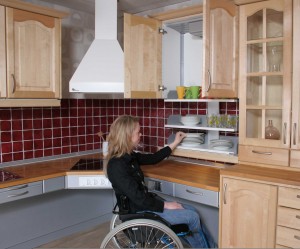
Many people find themselves needing accessible homes for themselves or family members. There are approximately 30 million Americans using wheelchairs and the number of people who need accessible homes will continue to increase as disabled and aging people are finding more ways to remain living in their homes. One important way to increase independent living is making a home accessible to an individuals personal needs. Universal design ideas and home modifications can increase safety, accessibility, and independence for people who want to live independently.
The National Association of Home Builders, in partnership with the AARP and Home Innovation Research Labs, created the CAPS program, which includes training and education on the technical, business management and customer service skills essential to compete in the fastest growing segment of the residential remodeling industry--home modifications for aging in place and ADA accessibility in Austin, Texas. David L. Traut, CAPS the owner of T-Square Company in Austin, Texas is one of the select group of professionals nationwide to earn the Certified Aging-In-Place Specialist (CAPS) designation, identifying him as a home remodeler and builder with the skills and knowledge necessary to remodel or modify a home to meet the unique needs of the older population, disabled owners, or their visitors.

Kitchens have evolved because fewer cabinets are needed within the more open designs. Fewer wall cabinets are needed because of personal reach limitations in a wheelchair accessible kitchen. For those that are used, they can be installed at 14" above the base cabinet work top instead of the standard 18" spacing. The cabinet top is now lowered by two inches and installed at a universal 34" height. This makes a net 6 inch lower installation height for the bottom of the wall cabinet. All types of cabinet inserts like pull out shelves and specialized drawers are now available for installation in both base and wall cabinets. These devices will certainly help solve the reach problem. Base cabinet kick spaces can be raised to 9" and deepened instead of the standard 4" to accommodate wheelchair access. Knee spaces can be incorporated into the design for roll under access at the sink, prep area, and cook top.
The lack of bending motion and decreasing reach distances is changing the way we purchase and install appliances at comfortable heights. Placing dishwashers higher by a few inches to limit bending has become a reachable fad and the new height is changing the old look of our kitchens. Refrigerator drawers, dishwasher drawers, and double ovens that are no longer stacked are just a few changes within the present day appliance marketplace. Cooking ranges with the controls located on the front represents another metamorphosis helping with reach problems. Microwaves can be installed on the now lowered 34" height counter top or within the lowered base cabinet according to the consumers need for adequate reach.

The lack of doors represents a change in the cabinet market. The new open look lets homeowners access what is stored within the cabinet without an open door blocking their clear path for approach. No matter in what manner the doors are hung they always interfere with accessibility. The open cabinet look is seen in both the bath and kitchen.
Accessible bathrooms today contain stylish ADA compatible vanities set at a universal height of 34 inches with clear knee spaces. The sink faucets are easily controlled by either wrist handles or levers. Toilets are available in comfort heights eliminating the deep knee bend needed for seating. Toilet seats are available with a heat feature and some have the ability to self close or have a night light. Curb-less roll in showers are advised for everyone involved in disability access baths. The shower should contain at least a shower wand on a sliding bar for varying heights of use along with a regular shower head and control if desired. Folding seats are useful if caretakers are ever involved. A low profile or roll in shower base will provide wheelchair or walker access. Grab bars around the bath and especially in the shower should be used while non slip floor covering should always be considered.
For additional information about the CAPS program, visit nahb.org/CAPS. For more information about T-Square Company or remodeling for a disability, visit www.tsquareco.com or call 512-444-0097.

Tags:
ADA compliant kitchen cabinets,
ADA accessible,
CAPS certified remodeling in Austin,
ADA bathroom cabinets,
ADA compliance,
disability bathroom remodels,
handicap accessible bathrooms,
accessibility home remodeling in Austin,
Universal Design,,
disability home remodeling in Austin,
disability bathroom remodeling in Austin,
aging in place specialist,
aging in place services,
aging in place design,,
disability home modifications in Austin,
Austin elder construction,
handicap accessibility,
handicap remodeling contractors,
disability home modifications,
accessibility remodelers in Austin,
handicap bathrooms,
disability remodeling in Austin
Problems encountered while accessing your home when you are wheelchair bound generally begin before or at the front door. If you can reach the front porch approach without obstruction then you have a great start since the stairs leading onto the front porch can be another matter all together. A correctly designed ramp having a 1:12 slope can adequately solve this problem. The use of grab bars and any railings will be dictated by the ramp's design and the regulations and physical limitations involved. Once your safely upon the porch, your home's front door width can become an issue. Any entry door less than three feet in width will cause a problem in maintaining a required 32 inch clear entry way which starts the new accessible route within your home. Rolling over any vertical threshold height greater than 1/2" is also difficult to maneuver. Once inside the structure a new set of problems concerning your accessibility will be discovered.

A traditional home builder has never truly considered the special needs of the disabled or aging within any home design. Unfortunately the design emphasis is always put on aesthetics and takes for granted everyone's mobility. There certainly are no guarantees or clauses within any home's sales contract that will prevent our future personal life experiences from introducing us to at least a temporary disability. Accidents will always happen and you could find yourself having to utilize a wheelchair or walker to facilitate your independence for mobility. Limitations in our mobility or constantly changing needs experienced by both the disabled and the elderly have sprung a new dimension in construction known as ADA remodeling to accomplish increased accessibility. Our homes have always been exempt from any and all of the accessibility regulations that have been put in place since 1968 when our Viet Nam veterans were returning home. The new evolving concept known as Universal Design for home remodeling is catching on nation wide and has been for several years as a sign of the times. Universal design techniques used in building makes a home more accessible to all regardless of their mobility or adaptive abilities. An evolution of new products used for disability home modifications is making those homes more accessible and has finally come about in the remodeling industry. These new advances in accessible home remodeling in Austin not only keep the living environments safer but will not compromise the home's aesthetics.

An accessible bathroom for the user's convenience and safety becomes the first issue for anyone using a wheelchair or walker for either a short time while recovering or for the rest of their life. The disability access bathroom will be located within the home's accessible route. Any architectural barriers encountered while approaching the bathroom entrance will need to be removed. The minimum clear widths have to be observed. This will include the bathroom door itself. Twenty four to twenty eight inch wide doors are commonly used during the construction of American homes for accessing the bathroom. However, anything below three feet does not meet the 32 inch required clear width needed for clearance of a wheelchair. This work may involve framing alterations and moving light switches. The electrical changes should be done by a licensed electrician assuring your safety.
A completely serviceable special needs bathroom must contain at least one ADA vanity and the accessible route must be defined. The vanity must be one with a clear underneath scald protected area having an unobstructed roll under capability for wheelchairs. These new residential vanities do not need to look institutional. They can be designed like any other piece of fine furniture. A five foot turning radius allowing the wheelchair to maneuver into any approach must also be associated with the ADA vanity. A 36x48" clear approach area to the vanity must be observed and this can overlap the five foot turning radius. The area of travel will then be enhanced by an unobstructed clear accessible barrier free route dedicated to reaching the vanity.
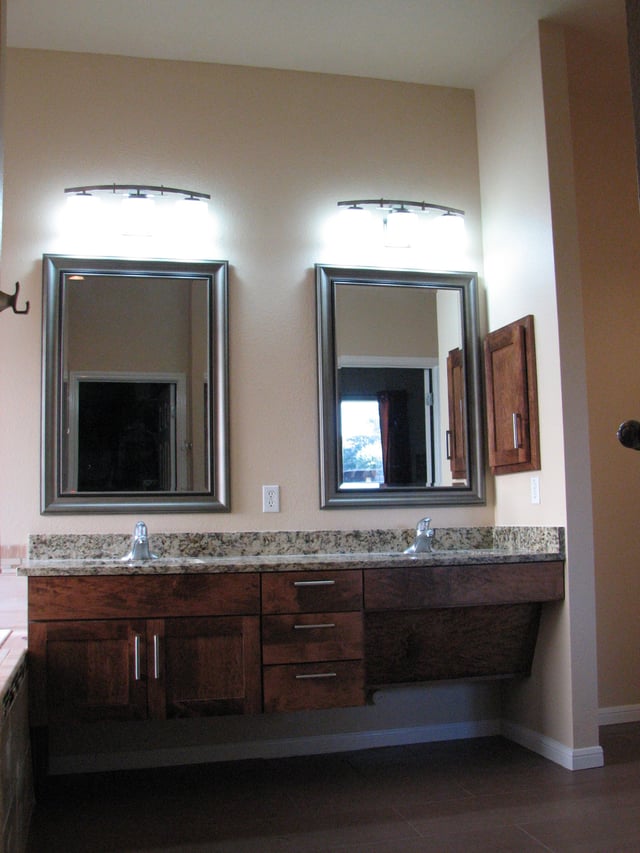
Bathroom cabinets in Austin vary by style and usability. There are basically two styles of ADA bathroom vanities that comply with an unobstructed 27" tall roll under area below the sink. ADA sinks with a rear drain location provide for better plumbing drain hook ups. This modification has everything to do with both the water supply lines and the waste line connecting the sink. There must be provisions made to protect the user from being scalded when coming into contact with any one of the plumbing pipes serving the sink. These connecting pipes may become heated merely by the water passing through them creating the problem. The open type model should always receive both waste and supply insulating jackets applied directly to the pipes providing protection for the wheelchair user. The closed model concealing the pipes will be equipped with a removable face or face board covering the pipes. This pipe concealing panel must be installed at the correct wheelchair user clearance angle. This allows for the needed unobstructed legroom required for the user. The vanity can extend beyond the sink but the area containing the sink is required to have this roll under capability. This section of the vanity top must not be any taller than 34 inches above the finished floor with sufficient lower leg clearance. Clear unobstructed reach distances around the counter top area must be observed. Any motion controlled sensors integrated into the various dispensing devices and/or plumbing fixtures throughout the restroom present a true hands free benefit to all the restroom users. If these aren't in the budget then at least wrist handles used for controlling the faucet can be incorporated into the design of the vanity. Furthermore, automatic flush valves should be used on all toilets and urinals that provide for hands free use.


Finding a contractor familiar with the guidelines of accessibility can be quite difficult. Be sure to check out the credentials of any potential bidders you contact. Be sure they understand that the alterations you are seeking are for wheel chair accessible home remodeling and modifications. Furthermore be sure this person knows and practices both the federal and most importantly your state's requirements before entering into any contract.
Aging in place home modifications are available through T-Square Company. We are a certified aging in place specialist. Each design/build situation will be customized to fit your personal needs. Call 512-444-0097 today to begin the accessible second chapter of your life while remaining safe and secure in your existing home. CAPS #1636580
Let's face it, accessible homes are needed by all of us at some time in our lives. This is true whether it's for ourselves, a family member, or a guest. The need is certainly not driven by age but is a result of life's experience. Any family living with disability among any of the generations within it's group can always benefit from additional accessibility. This will in turn increase safety and independence for all involved as they go through life.
Tags:
ADA accessible,
ADA bathroom cabinets accessible routes,
barrier free access,
aging in place home modifications,
ADA remodeling,
CAPS certified remodeling in Austin,
ADA bathroom cabinets,
ADA compliance,
disability bathroom remodels,
handicap accessible bathrooms,
aging in place designs,
CAPS professional in Austin,
accessible home remodeling,
Universal Design,,
Austin bath remodeling,
Austin bath remodel,,
Austin bathroom remodel,
disability home remodeling in Austin,
aging in place specialist,
aging in place services,
aging in place design,,
elder construction,
Austin elder construction,
handicap accessibility,
disability home modifications,
accessibility remodelers in Austin,
ADA remodeling Austin, Texas
Disability is a complex phenomenon representing an interaction between one's physical impairments, the activities they need to perform, and the architectural barriers within the space in which this situation occurs. The terminology and jargon used for disabilities evolves regularly whereas, "handicapped" is no longer acceptable. It is no longer merely a description of intellectual or physical impairments. Each individual with similar impairments describes his or her limitations differently. The blind don't experience their world the same as a person with deafness and so on. Physically challenged has become the more socially accepted description of a person with an impairment.

Physical limitations affect many more people than the daily users of walkers and wheelchairs. Many members of our life experienced or elder society have significant problems in dealing with their home environment. Today's conventional building standards conflict with most people's accessibility when you consider our created architectural barriers concerning cabinetry and door opening widths, individual strength, range of motion, movement, manual dexterity, balance, and coordination . This has brought about the need for handicap bathrooms. Once the demands of our built environment exceed their capacities we become excluded from a room or even the entire home. The building world must work in unison to be sure the entire living environment meets basic needs in addition to affordability and structural integrity for the consumer and home owner. Austin handicap remodeling is imperative considering bathroom remodeling includes both the home and the components within the home being accessible to all inhabitants. Privacy, sense of belonging, sense of control, and the sense of safety and security make up the quality of life for any home and should be considered for any design.
Designing for specific physical conditions will lessen the impact of say arthritis, restricted mobility, or loss of vision by using a combinations of products, concepts, and techniques. A trained CAPS specialist is able to identify the day to day problems weighing on those with health limitations. If you are considering an aging in place remodel for your home don't just contact any local remodeler in your area and expect a satisfactory accessible home modification. A professional design/build accessibility project can only be created for your specific needs by a qualified home remodeler having a nationally accepted CAPS certification. This credential is backed by the NAHB. Only a CAPS home remodeler possesses the specific knowledge that will insure a successful outcome for your aging in place project and what's more, keep you in your home.
The costs involved for handicap home modifications in Austin are really dictated by the amount of barrier free accessibility required by the person needing the assistance to be safe. Comfort and safety for the home's inhabitants are key issues when designing an accessibility remodel. Most homeowners nationally spend between $3,800 and $14,000 with a mean average expense of $7,500. This cost again is based on the individual home modifications providing the greatest safety for those in need.
Falls and slips are among the most common causes causes of injury to senior and elderly people requiring disability access remodeling. Smooth surfaces in combination with wet areas make the bathroom one of the most dangerous areas within the home. It is of paramount importance that the bathroom be updated providing safety for any person with limited mobility or the elderly. If you are on a tight budget and can only afford a few modifications, the bathroom is the first place to begin an accessibility remodel. The most basic improvements to enhance safety issues are fairly inexpensive.
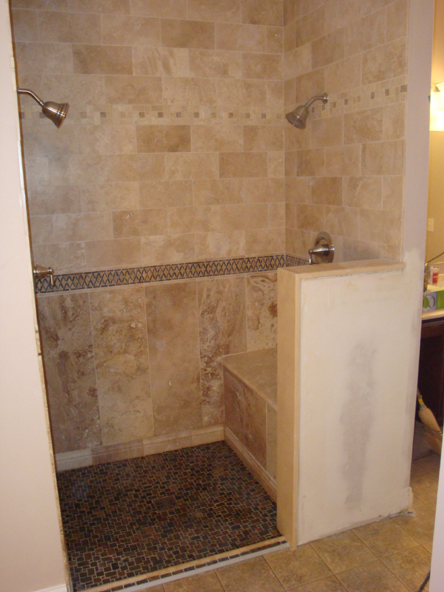

1. Vanity Sink Accessibility
Wheelchair Accessible bathrooms today contain stylish ADA vanities set at a universal height of 34 inches with clear knee spaces. Plan on 27 inches of vertical clearance for a wheelchair. The sink faucets must be easily controlled by either wrist handles or levers. The faucets can be fitted on the side of the sink to make them easier to reach. Or install infra-red faucets that detect motion. Hang the mirror low enough for a seated person to see themselves, and tip the top of the mirror out. Bathroom vanities with universal height cabinet tops and open knee spaces are taking over the marketplace. These new residential vanities do not need to look institutional. They can be designed like any other piece of fine furniture. Scalding must be guarded against by using either insulating pipe wrap or a removable panel for the plumbing.
2. Toilet Accessibility
Toilets are available in comfort heights eliminating the deep knee bend needed for seating. Grab bars should be installed on at least both sides of the toilet. Ideally, the toilet should be positioned between two support bars 36 inches apart. A toilet seat 17 inches off the floor is a more comfortable height for everyone. Creating a toilet within an open area and not a closet is much more accessible. Elevated or special toilet seats are available with a heat feature and some have the ability to self close or have a night light. A more expensive bidet/toilet is available but an add on bidet attachment to a regular toilet can be handy.
3. Bathing Facilities
Curbless roll in showers that are 5 feet wide and 3 feet deep having a 36" clear entrance are advised for everyone. The shower should contain at least a shower wand on a sliding bar for varying heights of use along with a regular shower head and control if desired. Installing fixtures with a scald guard or lowering the temperature at the water heater is a must to prevent burns. Folding seats in the shower are useful if caretakers are ever involved and they are much safer than a free standing shower seat which can fall over. Grab bars around the bath and especially in the shower should be used while non slip floor covering should always be considered. Walk in tubs are also a consideration but some people get chilled while the tub is draining. Install the slider bar for the hand held shower hose and head 4 feet off the floor so that the head can slide up to 6 feet high. Always use a shower valve that is thermostatically controlled and pressure-balanced to prevent scalds. If you desire a full body wash, you can include a regular shower head as well.
4. Safety and Accessibility
Always choose fixtures and fittings that are easy to control with a single hand motion or a closed fist. Motion controlled sensor fixtures are also a possibility when specifying finishes. Provide easily accessible storage compartments with pull out shelving eliminating architectural barriers by not using doors on the cabinetry. Always consider the individual needs of the occupant and find the best placement of any reachable items within their reach distance of 24". Fully consider where the best access is for all accessories such as robe hooks, towel bars, paper dispensers, soap dishes, toothbrush holders, shower shelves. The distances and clearances required will be dictated by the user and not by an accepted general outline. With falls in the wet area of the bathroom being such a great concern, a non slip tile floor should be installed without placing loose rugs in the general area. All doors should have levers instead of door knobs. The Americans with Disabilities Act requires a 5-foot turning radius for a wheelchair. But if space is tight, remodelers may be able to make do with less. "(The 5-foor turning radius) may not always be needed, especially with an electric chair, which will easily turn in a tighter space.
5. Lighting
Natural lighting is always better for anyone using the bath. Adequate task lighting in the shower, dressing area, and vanity vicinity should be installed. Lowered switches at around 48" above the floor in reaching distance should control all the lighting. You can install switches with a push button or large toggle that doesn't require a pinching motion to turn on and off. Outlets that are ground protected should be installed at 18" above the floor.

Aging in place home modifications are available through T-Square Company. Each design/build situation will be customized to fit your personal needs. Call 512-444-0097 today to begin the accessible second chapter of your life while remaining safe and secure in your existing home. CAPS 1636580
Tags:
ADA accessible,
ADA bathroom cabinets accessible routes,
aging in place home modifications,
wheelchair accessible remodeling,
CAPS certified remodeling in Austin,
ADA compliance,
disability bathroom remodels,
accessible home remodeling,
Universal Design,,
Austin bath remodeling,
Austin bathroom remodeling,
aging in place design,,
disability home modifications in Austin,
Austin elder construction,
handicap remodeling contractors,
bathroom modifications for disabled,
home improvements Austin,,
accessibility remodelers in Austin,
ADA remodeling Austin, Texas,
ADA bathroom Austin, Texas,
roll in showers,
accessibility designs Austin Texas,
disability access bathrooms Austin
The ADA refers to the Americans With Disability Act developed in the 1990's to be sure any person with a disability has equal access to all public facilities and spaces. There are no restricted codes or regulations to increase accessibility for private residences concerning residential bathrooms or disability access baths. However, the published guidelines for ADA accessibility concerning public buildings and facilities is a great resource and starting point for ideas on how to make any home safer and easier to live in. Using the ADA guidelines, every design is customized around the end users abilities and body size. Homes can become more accessible through bathroom remodels to people as they age or become disabled from an accident or chronic disease. Many of these published guidelines for wheelchair accessible remodeling, particularly requirements for corridor and door widths, safety bars and proper access to different types of facilities can go a long way in extending the amount of time an elderly or physically impaired individual is able to live independently. This is the primary goal for ADA remodeling.
Many people suddenly find themselves needing accessible homes for themselves or family members. When mobility becomes an issue for any homeowner, regardless of age, the question arises concerning physically moving to a different home with a bathroom that is more accessible. Preparing for one of those highly likely events involving someone in your home needing room modifications for even a short time while recovering from surgery is surely a smart move and is the essence of proactively planning to Age in Place. Solving Aging in Place issues will soon become the number one challenge concerning the present obsolete housing inventory in our country plus the fact that people are living longer. The situation will only become ever more expanding in time.
When our homes were first purchased, they satisfied the particular family needs of the day. These homes represented an absolute castle in the world of their owners in which to prepare for a day and they also acted as a retreat from life's tough interactions. They housed our families, our memories, and our stuff. They represented a place where we could be ourselves. Then something happens in life changing those family needs. Unfortunately, these homes have always been exempt from any and all of the accessibility regulations mentioned by the ADA.
In fact, there are approximately 30 million Americans using wheelchairs and the number of people who need accessible homes will continue to increase as disabled and aging people are finding more ways to remain living in their homes. One important way to increase independent living is making a home accessible to an individuals personal needs. Home modifications can increase safety, accessibility, and independence for people who want to live independently. T-Square Company, building in Austin, Texas, incorporates the ADA rules in all their design/build projects, but in a customized manner. All disability home remodeling or disability bath remodels in Austin must be done considering all the data provided by the client, his or her family, and any caretakers involved. Aging in Place design should always be carried out by a seasoned Aging in Place specialist like T-Square Company.
The new evolving concept known as Universal Design and specialized handicap remodeling contractors for home remodeling is catching on nationwide and has been for several years as a sign of the times. Universal Design techniques used in building makes a home more accessible to all regardless of their mobility or adaptive abilities, and seamlessly segues into what is needed for Aging in Place. An evolution of new products used for disability home modifications is making homes more accessible and has finally come about in the remodeling industry. These new advances in accessible home remodeling not only keep the living environments safer but will not compromise the home's aesthetics. They blend into the existing home and do not appear institutional. Universal Design principles never call attention to the family member needing them the most. In fact, there are many benefits to using Universal Design techniques, including potential use by aging family members, added resale value, and the fact that you'll be creating a space that can be used by anyone who visits your home, regardless of their range of abilities. Simple Universal Design updates for Aging in Place home modifications and handicap bathroom accessibility can include adding grab bars or handrails throughout the home, adding a seat within the roll-in-shower, lowering upper cabinets and multiple height counter tops, adding non-slip flooring, widening hallways or installing stair lifts, and widening doors. You might also consider lowering light switches and thermostats and installing easier to use door knobs. You should provide a clear barrier-free path or accessible route to the most visited areas of your home as recommended by the ADA. People who are interested in Aging in Place home improvements are now looking for a level entry into their home along with the maneuverability that a more open floor plan having greater clear unobstructed floor space presents. They desire flat floors without transitions requiring steps or stairs to move around. Ramps having a correct 1:12 slope can be used to get them up to the level floor space at the exterior entries or the garage access. ADA compliant kitchen cabinets and ADA bathroom cabinets in handicap bathrooms will more than likely come into play to complete any accessible home remodeling project.
Most aging baby boomers prefer one-story homes in which to Age in Place and this has become a primary reason to relocate versus a remodel. They are looking for an accessible master suite and kitchen located on the same floor. However, some developments mandate building two-story homes. The above requirement can be easily met by placing the guest bedrooms and accompanying bath upstairs. If the master suite for any reason needs to be upstairs, closets can be stacked between floors to house a future elevator installation.


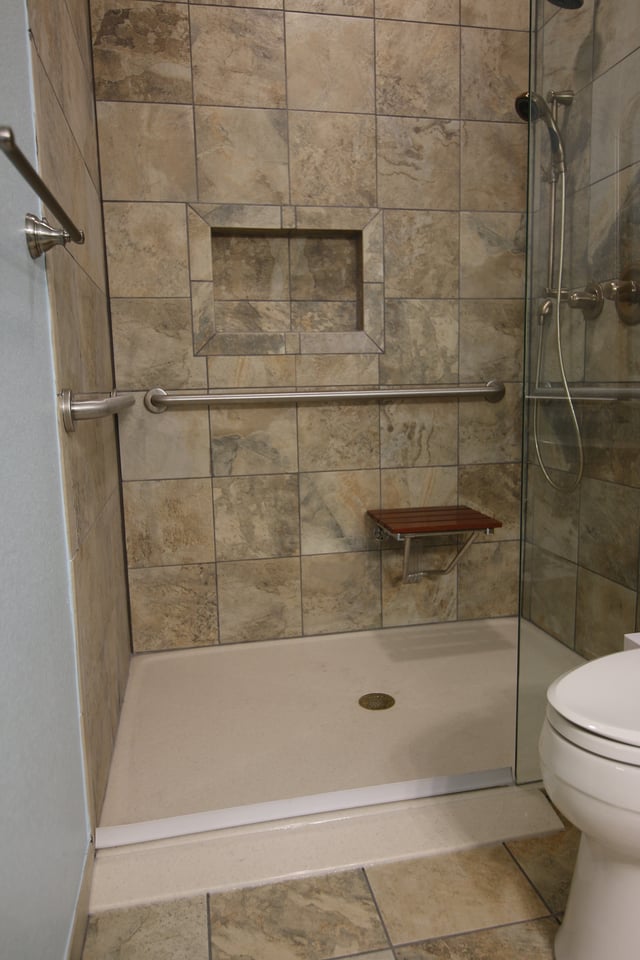


The National Association of Home Builders, in partnership with the AARP and Home Innovation Research Labs, created the CAPS program, which includes training and education on the technical, business management and customer service skills essential to compete in the fastest growing segment of the residential remodeling industry--home modifications for Aging in Place and ADA accessibility in Austin, Texas. David L. Traut, CAPS the owner and president of T-Square Company in Austin, Texas is one of the select group of professionals nationwide to earn the Certified Aging in Place Specialist (CAPS) designation, identifying him as a home remodeler and builder with the skills and knowledge necessary to remodel or modify a home to meet the unique needs of the older population, disabled owners, or their visitors. Additionally, he is certified in Universal Design in the United States and Australia. David has recently published a book called "Age in Place at Home: Adapting the Home Environment For All Generations". The book explains the importance of Universal Design in building and is available through Amazon.
Tags:
ADA accessible,
accessible routes,
ADA bathroom cabinets accessible routes,
barrier free access,
aging in place remodeling,
aging in place home modifications,
aging in place,
ADA remodeling,
ADA compliance,
disability bathroom remodels,
accessibility home remodeling in Austin,
CAPS professional in Austin,
CAPS certification holder in Austin,
accessible home remodeling,
CAPS remodeling techniques,
Universal Design,,
Austin bathroom remodel,
disability home remodeling in Austin,
bathroom modifications for elderly,
aging in place specialist,
aging in place services,
aging in place design,,
elder construction,
certified aging in place specialist,
disability home modifications in Austin,
Austin elder construction,
handicap home modifications for disabled,
handicap accessibility,
bathroom modifications for disabled,
bathroom accessibility remodels in Austin,
accessibility remodelers in Austin,
ADA bathroom Austin, Texas,
accessibility designs Austin Texas,
handicap bathrooms,
ADA Austin
Commercial bathroom remodeling Austin is supremely different than any fine bathroom upgrade involving a residential setting. You have to consider the needs of the general public and not simply the needs of a certain set of employees involved at working at a business. There are many guidelines and sets of rules to be considered. Compliance with these regulations will be acheived by first hiring an experienced commercial building contractor. Be aware that a true residential contractor normally does not possess the knowledge of the contractor operating within the commercial world of construction. He simply does not use nor is he confident with all the commercial rules. Meeting and understanding the ADA accessibility regulations as they pertain to all commercial buildings requires a certain skillset and experience. A commercial contractor will possess the knowledge of the building's structure and composition along with the experienced ways of altering the construction to bring it into compliance.
A completely serviceable special needs bathroom must contain an ADA accessible vanity. The vanity must be one with a clear underneath scald protected area having an unobstructed roll under capability for wheelchairs. A five foot turning radius allowing the wheelchair to maneuver an approach must also be associated with the ADA vanity. The area of travel will then be enhanced by an unobstructed clear accessible barrier free route dedicated to reaching the vanity.
Whether the job concerns ADA remodeling or new construction, commercial or residential, the end result will always be the same in aiding those who no longer or have never had the choice of a means of locomotion. Sometimes folks need a little help beyond the rest of us to be self sufficient and hold on to their dignity. That's when the clear accessible route comes into play. This designated route wil make it possible for those with special needs to enter through the front door and travel into any room of the structure without barriers like the bathroom.

There are basically two styles of ADA vanities that comply with an unobstructed roll under area below the sink. This capability has everything to do with both the water supply lines and the main waste line connecting the sink. There must be provisions made to protect the user from being scalded when coming into contact with any one of the plumbing pipes serving the sink. These connecting pipes may become heated merely by the water passing through them creating the problem. The open type model should always receive both waste and supply insulating jackets applied directly to the pipes providing protection for the wheelchair user. The closed model concealing the pipes will be equipted with a removable face or face board covering the pipes. This pipe concealing panel must be installed at the correct angle. This allows for the needed unobstructed legroom required for the user. The vanity can extend beyond the sink but the area containing the sink is required to have this roll under capability. This section of the vanity must not be any taller than 34 inches above the finished floor with sufficient lower clearance. Clear unobstructed reach distances around the countertop area must be observed. Any motion controlled sensors integrated into the various dispensing devices and/or plumbing fixtures throughout the restroom present a true hands free benefit to all the restroom users. If these aren't in the budget then at least wrist handles used for controlling the faucet can be incorporated into the design of the vanity. Furthermore, automatic flush valves should be used on all toilets and urinals that provide for hands free use.
Regardless of whether there are special needs people working within a commercial building or not, we are required by law to make all the common areas ADA accessible. Homes provide a different situation because the alterations are put in place for specific full time occupants. The barrier free accessible route put in place must be observed as a means of life safety and function. You just never know when a personal life changing situation can appear requiring help for those with special needs. If one does occur we do have the means to offer aid and safety to those who have become afflicted in some unfortunate way and to help preserve their personal dignity and independence.
A Typical Commercial Bathroom Layout Representing Better Accessibility
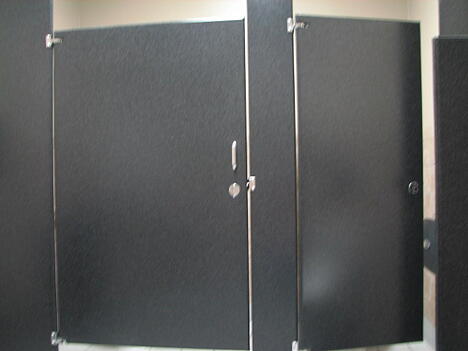

Tags:
Austin,
Texas,
ADA compliant kitchen cabinets,
Commercial Construction,
ADA accessible,
ADA bathroom cabinets accessible routes,
bathroom remodels,
ADA remodeling,
building professional,
ADA bathroom cabinets,
ADA compliance,
ADA vanities,
accessibility remodelers in Austin,
ADA remodeling Austin, Texas,
ADA bathroom Austin, Texas,
accessibility designs Austin Texas,
commercial ADA bathroom,
commercial ADA accessible vanitys,
commercial ADA accessible vanities,
commercial ADA vanities,
commercial bathroom remodeling
What makes a bathroom remodel more Austintaceous in a laid back Central Texas city like ours? What propels a bathroom upgrade to stand alone in Austin like the proud lone star representing our beloved state? What enhanced characteristics are shared but also contribute to all completed bathroom transformation projects making them exclusive and individual? Personality with pride is the only way to sum up all the major characteristics adding up to create a great Austin bathroom remodel. There is a feeling within the new bath that only the great wide open spaces of Texas suggest denying the discomfort of confinement. We all express our individuality living here in Austin. We meld together our backgrounds and cultural differences to form a diverse but unique city with style. Certainly style is what is needed to compliment that pride that Texans feel so strongly.


Just look at the different types of housing represented throughout this city and it's surrounding areas. Smaller homes, cottages, sprawling historical townhomes surrounded by architecturally pleasing fences, rustic ranch homes, Macmansions, and sleek high rise condominiums are just a few examples of the structures that define Austin's diverse housing landscape. Economic situations along with personal preference formulates where we choose to live in a town with such diversity.
Committing to a bathroom remodel means taking many factors into account in the planning stages. No matter which type of the structures listed above you're dealing with, you must lean toward making the new bathroom upgrade blend with your existing home's design existing in harmony with it's surroundings. All efforts must be made to prevent it from appearing as a "dirt dobber" design. Putting an ultra modern updated bath into a dated urban cottage really doesn't blend well. The types of architecture dealt with will clash and one will override the other taking away the prospect of a blending project to your home.

Certainly there are many bathroom upgrades available when planning a bathroom transformation. The replacement of the tub with a new walk in shower from a custom tub to shower conversion can create a bold look but will run you around $11,000. There are no spending limits for bathroom remodels. You can plan on spending around $12,000 to $15,000 for a hall bath remodel. The price tag can approach or exceed $35,000 for a complete master suite remodel. The type of fixtures and building components chosen along with the labor will compose the overall cost of the remodeling project. The price for a custom walk in shower will begin at around $13,000 by itself depending on the size.
Updated Austin, Texas bathroom remodels consist of a blending of hardwoods used to create fine cabinetry, granite tops, oil rubbed bronze fixtures, faucets, and hardware accessories just to name a few. Simply changing the bathroom cabinets can create the look of a new space. They come with matching light fixtures. They have walk in showers with elegant frameless door enclosures and artfully framed beveled mirrors. These bathrooms can be accented using glass blocks, glass and travertine tiles, pebbled backsplashes, and seats within the walk in shower design where shampoo niches can often be found. Colors remain natural and vanilla but are accentuated using a light to dark contrast between the richly stained woods and the natural stone tiles.
Young Austin homeowners are always looking for ways to bring their existing older home's bathrooms up to date. They can't afford a major remodel while providing for a new family. Bathroom remodels for these smaller baths can incorporate a number of the items listed above in moderation to fit any budget. Using beautiful ceramic tiles in an interesting design, updating plumbing fixtures, and the use of neutral colors can create a small bathroom with a "wow" factor. It is quite possible to produce a small but charmingly remodeled bath on a budget. A project that is affordable plus the fact that it will add resale value to your home cannot be denied. Check out all the options before committing to a plan and then stick to it. Always hire a local and professional builder. Remember that producing change orders because no one thought of "that" can be expensive. Create the style for your Austin bathroom remodel that best gives you that feeling of pride!


Tags:
Austin,
Texas,
residential construction contractor,
older structures,
fine bathroom upgrades-bathroom cabinetry,
fine bathroom upgrades,
bathroom remodels,
bathroom makeovers,
ADA remodeling,
home remodeling,
glass block designs,
bathroom remodelshow-to,
building professional,
disability bathroom remodels,
handicap accessible bathrooms,
custom tub to shower conversions,
accessible home remodeling,
Austin bath remodeling,
Austin bath remodel,,
Austin bathroom remodeling,
Austin bathroom remodel,
disability bathroom remodeling in Austin,
bathroom modifications for elderly,
aging in place specialist,
aging in place services,
aging in place design,,
handicap remodeling contractors in Austin,
bathroom renovations in Austin, Texas,
bathroom remodeling contractor Austin Texas,
bathroom remodeling Austin Texas,
bathroom upgrades Austin,
bathroom modifications for disabled,
bathroom cabinets Austin Texas,
bathroom accessibility remodels in Austin,
accessibility remodelers in Austin
You have contemplated and dreamed of an addition to your home for years but now it's time for you to make a decision as to how you accomplish your basic needs for living. Certain changes in your lifestyle have dictated an expansion. Your living space has grown more crowded over time with additional family members being added as children, extended family members, or you may now find yourself having to provide care for an elderly family member. Any and all of these life changing situations can add stress to your daily lifestyle creating the need for additional living space or home improvements Austin.


As our children grow older they generally require more space and sometimes privacy. This sparks a need for additional bedroom space alone once an aging relative or spouse is introduced into the original home's square footage who requires special care. Here, privacy can truly become an issue just to keep everyone happy while underneath the same roof. Perhaps even private entrances will be required for some of the home's new residents. These private entries could be required to begin a new accessible route if there are ADA compatibility issues involved.

It's time to find yourself either a qualified architectural firm and residential remodeling contractor or a local experienced residential construction contractor with in house design capabilities who can build what is designed. The latter situation is usually your best shot at getting what you basically need to solve your living situation problems allowing you to cut out the beyond budget frills. You will also save on the soft costs of your construction project that have nothing to do with the structual building process itself. Many local residential contractors are quite capable of pushing out a wall in your home and putting a top on the structure. This capability is based on both their experience and knowledge of all the building trades, especially the framing aspect that will be involved. Actual experience in this particular facet of the project could proove to be very helpful for visualizing the construction and it's possibilities. Has this contractor ever done this kind of project before? Does he himself have skilled experience or does he appear to be a drive by limited contractor at the mercy of his subcontractor's capabilities? Any depth of design is totally based on experience. You will need to completely check out the contractor's references and any memberships in local business organizations like the Better Business Bureau. What kind of rating does the residential remodeling professional have and how long has he been an accredited member? Does the company have both general liability and Workman's Comp insurances and did the company offer you a certificate of insurance verifying their coverage. You need the kind of information that can't be paid for and posted by the residential remodel contractor in question. Don't be taken in by contractor listing and referral sights that promise you successful and competent businesses. They were listed there for one and only one reason, somebody paid for the listing fee. Membership to national associations like NARI reflect only a self paid fee but says nothing about the contractor's experience and creativity. That only comes from past customer's testimonials that you can fact check.
Now how about the competitive bid prices you have collected? A good rule of thumb is to toss out the lowest and highest numbers and go with the mid price. This is true if and only if the company can pass the litmus test outlined above. However, the project should be based on overall quality and remember you usually get what you pay for. This situation will be solved with how the personalities of you and the contractor mesh together. You must be able to communicate with this person who has come into your life throughout the construction process while keeping a level head for problem solving. There will be problems because every construction and remodeling project has at least one. There also needs to be a norm in the way the proposal is written. Has the bidder been transparent and detailed to you in writing what is being covered within the bid? Are there meaningful and fair allowances contained within the bid covering the materials that will be used but have no specifications as of yet? You must do your homework before entering into any contract without regret.
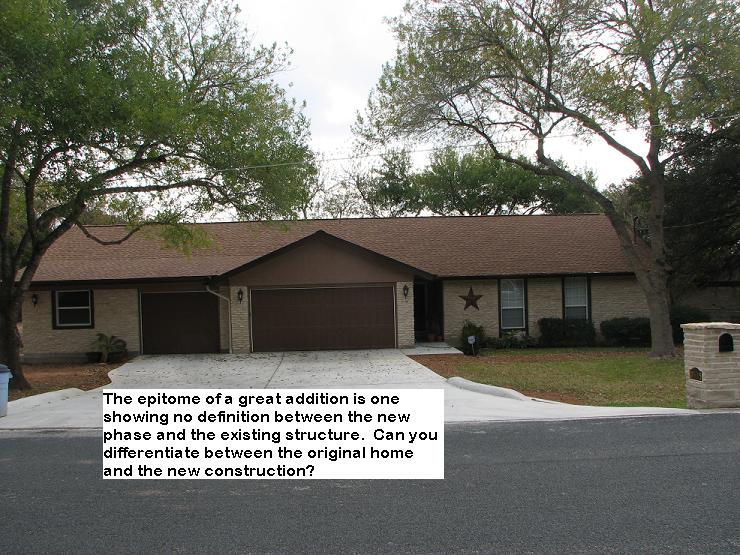
Tags:
Austin,
Texas,
residential construction contractor,
how-to,
ADA accessible,
accessible routes,
aging in place remodeling,
aging in place home modifications,
aging in place home improvements in Austin,
older structures,
residential remodeling,
ADA remodeling,
home remodeling,
aging in place construction,
accessibility home remodeling in Austin,
accessible home remodeling,
disability home remodeling in Austin,
aging in place specialist,
aging in place services,
aging in place design,,
renovation contractor in Austin, texas,
home modifications Austin, Texas,
home improvements Austin,,
accessibility remodelers in Austin,
house remodeling Austin,
home remodeling Austin, Texas
You've spent your time looking through the internet examples of bathroom remodeling. You've gazed at all the remodeling books offered at the local grocery and lumber box stores. Now you've come to the conclusion thatnone of them immediately suits your current situation. The pictures you studied of fine bathroom makeovers are composed of lavish bathrooms with huge footprints way beyond the scope of your modestly sized room needing a fine bathroom upgrade.

Bathroom sizes are usually dictated in some respect by the length of the tub which in most cases is five to six feet long. This is evidenced by a tub that has been installed opposite the entry wall producing a wall to wall tub situation. In this configuration the toilet and vanity are generally placed on one of the walls that are perpendicular to the length of the tub. Here is a great starting point to gain space for a larger custom walk in shower to replace the tub you never use. But if you are fortunate to have both wall lengths exceed the five or six feet norm then space is not an issue and you can proceed with ease. Just choose your finishes wisely and keep all choices within your budget.
If you're current situation is cramped but you already have a double vanity, you might gain space for a new shower expansion by either shortening the vanity while keeping the two sinks or by going with one single sink located in the middle of a shorter vanity. This can be accomplished by capping off one sink drain completely and/or deleting the water supply stops. If your toilet is located between the vanity and tub then shortening the vanity is all for naught. You can move the toilet over but this means breaking out the floor to change the toilet plumbing floor flange plus the water supply. Be careful as this alteration can be costly and should only be done to allow certain specific situations to evolve.


Moving on to either the tub removal bringing about a walk in shower design or the tub's replacement highlighted with a custom shower surround, you'll have to decide what will be of the most use to you. A tub surround limits your creativity but you can still enjoy a couple of shampoo nooks installed between your existing studs before any tiling takes place. Replacing the old tub/shower valve and tub spout will also give you a shiny feeling of newness. A new glass enclosure will provide a revived look plus the more expensive frameless models will bring your bathroom completely up to date.
If deleting the tub to achieve a custom walk in shower design is your choice then you have a few options to consider. Do you wall in two thirds of the width of the old tub placing the new door away from the shower head? This new wall can be tiled in to match the shower and can also have glass blocks inserted into it for natural light to prevent claustrophobia. Do you desire a full length curb to accommodate a taller ready made glass enclosure or even the more expensive frameless model set beside a glass panel? The designs are limited only by your imagination and how you want the final product to turn out. Be sure that all your research is justified and don't try to cram too much into your new bathroom remodel. A good design is one that can come into being with the least time spent on alterations and additional costs.
If you're uncertain about how to proceed during Austin bath transformations always rely on a local and trusted building professional. Sometimes spending a little money for experienced help with design and construction techniques can save you a lot during the construction process.

A Tub to Shower Conversion with Seat Derived From a Shorter Vanity with Glass Block Inserts
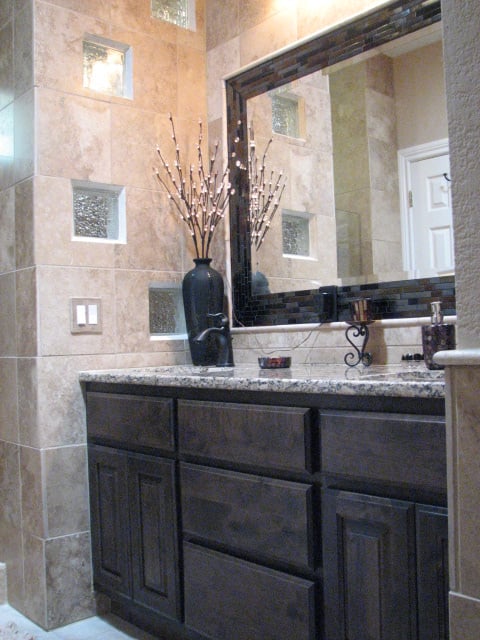
Accessible Bathrooms In Austin
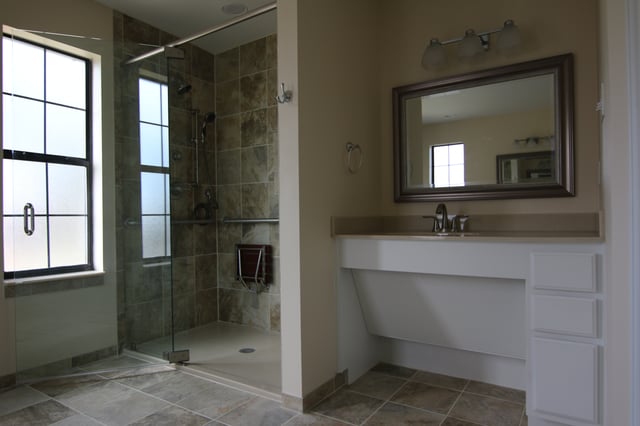
Universal design and aging in place services in Austin have finally taken hold in the residential remodeling industry. The current housing inventory doesn't offer the features needed for safety and accessibility in the numbers needed to accommodate the growing demand. It is ultimately up to the homeowners and their families to plan for future housing needs. Our existing architecture does not lend itself well to accomplishing any easy aging in place home remodels in Austin. In fact, there are more inaccessible homes in all of the US than there are accessible homes and 45% of these existing homes are owned by the baby boomers representing the oldest group of homeowners. Generally speaking in most residential US properties there are no easy ways to enter into bathrooms or utilize kitchens without coming into contact with one architectural barrier or another-especially if a wheelchair or walker is being used to help with mobility issues. Everything requires the proper clearance and distance for a new customized accessible route in your home to function properly. Please consider this aspect in your design if an elderly parent will be coming to visit or you yourself suffer an unfortunate accident or develop a debilitating disease.
The National Association of Home Builders, in partnership with the AARP and Home Innovation Research Labs, created the CAPS program, which includes training and education on the technical, business management and customer service skills essential to compete in the fastest growing segment of the residential remodeling industry--home modifications for aging in place. David L. Traut, CAPS the owner of T-Square Company in Austin, Texas is one of the select group of professionals nationwide to earn the Certified Aging-In-Place Specialist (CAPS) designation, identifying him as a home remodeler and builder with the skills and knowledge necessary to remodel or modify a home to meet the unique needs of the older population, disabled owners or their visitors. Call us at 512-444-0097 to see how we can help you design your bath for the future.

Tags:
Austin,
Texas,
how-to,
fine cabinetry,
aging in place home improvements in Austin,
bathroom remodeling,
fine bathroom upgrades-bathroom cabinetry,
fine bathroom upgrades,
bathroom remodels,
glass block designs,
custom walk in showers,
ADA bathroom cabinets,
accessibility home remodeling in Austin,
Austin bath remodeling,
Austin bath remodel,,
Austin bathroom remodel,
bathroom modifications for elderly,
aging in place specialist,
aging in place services,
bathroom renovations in Austin, Texas,
bathroom remodeling contractor Austin Texas,
bathroom remodeling Austin Texas,
bathroom upgrades Austin,
bathroom modifications for disabled,
bathroom cabinets Austin Texas,
bathroom accessibility remodels in Austin,
accessibility remodelers in Austin
Elder design takes on many facets because everyone ages differently. Once you pass through the entry door that begins a designated accessible route, the next phase of any ADA remodeling for greater accessibility includes making all destinations wheel chair accessible. Everyone requires the unrestricted use of any sinks and bathing facilities to promote personal hygiene and independence for any Austin bathroom remodel. This includes the sinks in both the kitchen and bath areas installed within ADA compliant cabinets at the correct 34 inch height. Roll under capability for wheelchair access will be included maintaining the proper clearances underneath the vanity during any bathroom modifications for elderly people. Furthermore those sinks must have accessible faucets with either automatic dispensing capabilities or manually operated blade (wrist) handles. Both the water supply lines and the sink drain underneath must be insulated or covered to prevent scalding when remodeling a bathroom with disability access.


Wheelchair Accessible Vanities
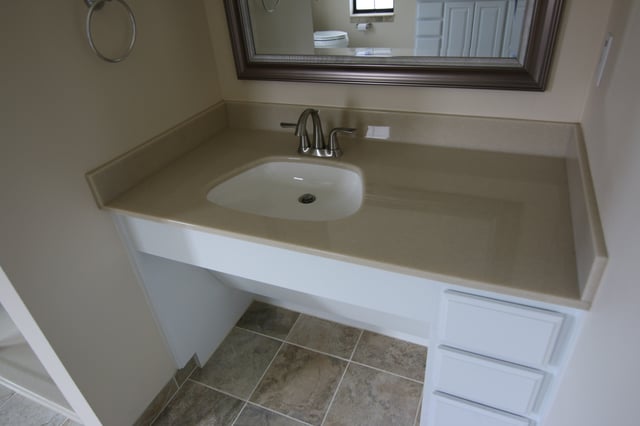
ADA accessible baths from a bath tub standpoint are generally limited to showers and the type of shower used is determined by the end user's physical capabilities. ADA compatible showers typically offer roll in or transfer situations. Custom tub shower conversions should be totally accessible. Regardless of the type ADA shower being used, a proper half inch threshold at the shower entrance should be observed for a custom walk in shower or you will need a means to add a ramp later. The splashing drawback of this situation can be remedied by installing a second wet trap floor drain overcoming any sewer gas problems arising from a dry trap.

The water controls located within the ADA accessible shower from a custom tub to shower conversion should include an easily adjustable faucet for temperature control with an automatic scald guard shield and an adjustable sliding wall mount capable of holding a hand held shower wand if desired. When the hand held shower is not mounted the user can rinse off easier using it as a hand held unit. The installation of grab bars as needed is a must.
Roll In Showers
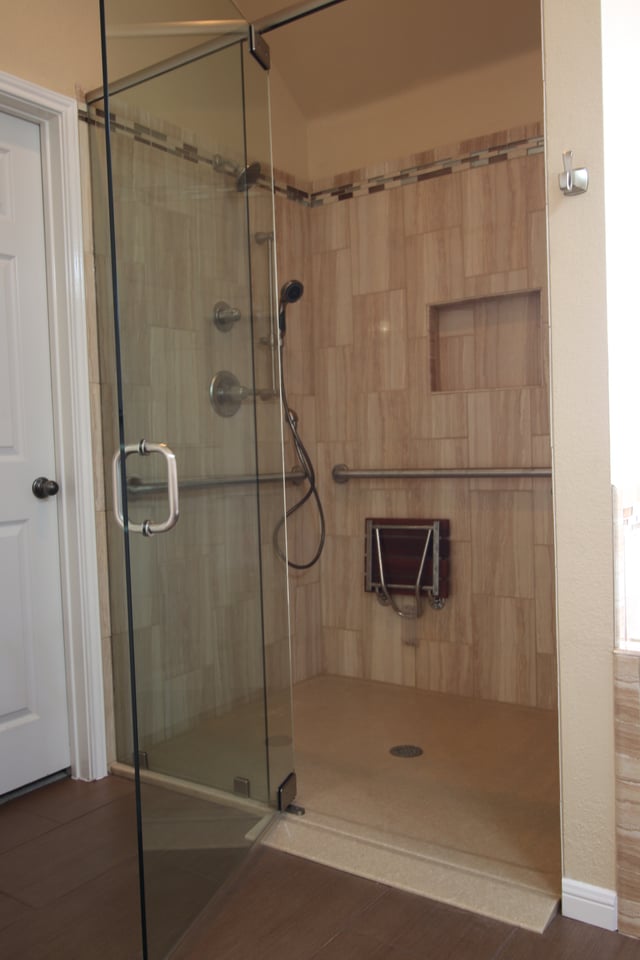

Toilets need to have the flush handle located toward the middle of the room and be of the correct height for comfort. Proper clearance from any walls must be observed and the approach to the toilet must be maintained. Grab bars should be installed both on the rear and sidewall of the toilet at 34 inches above the floor. Any bathroom transformation needs to include universal design characteristics and be accessible to everyone in the home.
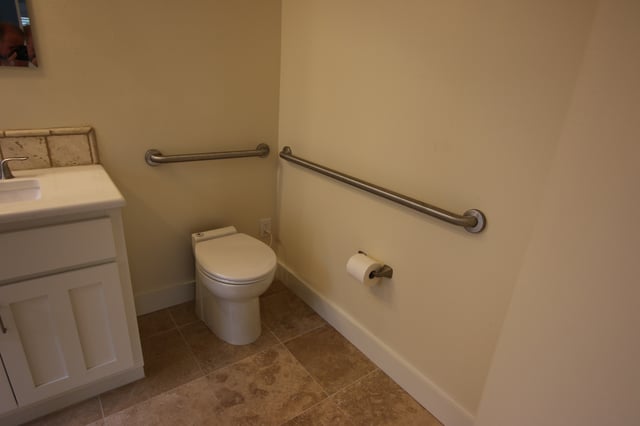
Remember to choose a remodeling contractor with ADA experience who is CAPS certified to show you how to get the greatest accessibility for your evolving lifestyle.


Tags:
how-to,
ADA compliant kitchen cabinets,
ADA accessible,
ADA bathroom cabinets accessible routes,
aging in place home modifications,
ADA remodeling,
CAPS certified remodeling in Austin,
ADA kitchen cabinets,
accessibility home remodeling in Austin,
accessible home remodeling,
bathroom modifications for elderly,
aging in place specialist,
aging in place services,
Austin elder construction,
bathroom modifications for disabled,
ADA vanities,
bathroom accessibility remodels in Austin,
accessibility remodelers in Austin,
ADA remodeling Austin, Texas,
ADA bathroom Austin, Texas,
accessibility designs Austin Texas,
handicap bathrooms
Many of us will face at least a temporary disability during our lifetime requiring some alterations to our living space. Those changes which will greatly aid in maneuvering through our daily routines. The temporary or permanent use of mobility devices signifies a lifestyle change in anyone's future often as a result of an accident. This situation can make getting around safely in our home much more difficult. The often used daily paths in our lives will be disrupted and complicated if you find yourself using a wheelchair or walker as a permanent means of mobility.


Keeping ourselves independent requires planning during handicap remodeling projects providing accessible routes throughout the home. Sometimes just entering the home can be a problem if you find yourself in a wheelchair pondering on how to negotiate the steps leading to your front door. Traditional home builders have never considered the issues affecting mobility for the disabled or elderly.

ADA remodeling and universal design ideas begin at the front door using ramps to get around the stair issue mentioned above. The front door may need to have locking hardware complying with special needs. Once inside the home, an accessible design and designated route will let you reach the kitchen or bath without restrictions. The adjusted clearances between walls within a hallway will be wide enough (42" or more) for a smooth passage. Widening the entrances to all rooms to 32" or greater means you can now maneuver throughout the home. By using the correct lever door hardware you will no longer impede mobility creating frustration while moving about. Having an unobstructed turning radius of five feet within each room is also very important for wheelchair maneuvering, especially in the bathroom.

What really defines the accessible homes of Austin? Barrier free architectural design and accessibility for all who enter the structure while approaching the main living areas of the home in question is a fair definition. Universal design and aging in place trends have taken hold in the residential remodeling industry. The current housing inventory doesn't offer the features needed for safety and accessibility in the numbers needed to accommodate the ever growing demand. It is ultimately up to the individual homeowners and their families to plan for future housing needs. Once it is discovered that modifications to an existing home are not possible to accomplish total accessibility then it is time to consider a newer or custom built accessible home. What are the main design issues regarding aging in place home modifications in Austin?
- Low maintenance with little need for landscaping or exterior upkeep which could translate into newer rather than older homes that are the accessible homes of Austin.
- An accessible level entry either achieved with ramps or the rare flat lot in Austin. Consumers are looking for the free maneuverability that more open floor plans offer having greater clear unobstructed floor space. Wider doorways and unobstructed accessible routes are truly a concern. These structures will provide flat floors without transitions requiring steps or stairs to move around.
- An accessible master suite and kitchen located on the same floor is preferable. If two story homes are mandated by the community then the guests will inhabit the second floor. If the master suite needs to be located on the second floor then closets can be stacked to house a future elevator installation.
- Evolving kitchens have sprung up due to the more open floor plans. Fewer wall cabinets, lowered cabinet tops, pullout shelves or specialized drawers, and a reduced number of mobility obstructing doors represent the evolution of today's cabinetry. Knee spaces can be incorporated into a kitchen design for roll under access to the sink, prep area, and cook top. Higher toe kicks can facilitate greater wheelchair access.
- Appliances are being installed at more comfortable heights due to decreased reach distances and bending motion. Raised dishwashers, refrigerator drawers, dish washing drawers, and non-stacked double ovens are just a few changes within the appliance world. Microwaves can be installed below the cabinet top and cook tops with controls located on the front represent another appliance metamorphosis helping with reach problems.
- The lack of cabinet doors creating a new accessible open look for cabinetry is taking hold on the market. This is becoming more popular in both the bath and kitchen of accessible homes.
- Bathroom vanities with universal height cabinet tops and open knee spaces are taking over the marketplace. These new residential vanities do not need to look institutional. They can be designed like any other piece of fine furniture. Comfort height toilets covered with any one of a multitude of available seats to fit every need prevent deep knee bends required for seating. Curbless roll in showers are advised for everyone on a universal level. The shower should contain at least a shower wand on a sliding bar to be available for varying heights of use along with a regular height shower head with diverter control if desired. Folding seats are useful if caretakers are involved and secure grab bars around the shower perimeter will increase the safety factor and prevent falls. All of the bathroom floor surface must be nonskid to prevent slipping on a guaranteed wet floor.

Finding a contractor familiar with the guidelines of accessibility can be quite difficult. Be sure to check out the credentials of any potential bidders you contact. Be sure they understand that the alterations you are seeking are for wheel chair accessible home remodeling and modifications. Furthermore be sure this person knows and practices both the federal and most importantly your state's requirements before entering into any contract.
Let's face it, accessible homes are needed by all of us at some time in our lives. This is true whether it's for ourselves, a family member, or a guest. The need is certainly not driven by age but is a result of life's experience. Any family living with disability among any of the generations within it's group can always benefit from additional accessibility. This will in turn increase safety and independence for all involved as they go through life.
Aging in place home modifications are available through T-Square Company. We are a certified aging in place specialist. Each design/build situation will be customized to fit your personal needs increasing your accessibility. Call 512-444-0097 today to begin the accessible second chapter of your life while remaining safe and secure in your existing home. CAPS #1636580
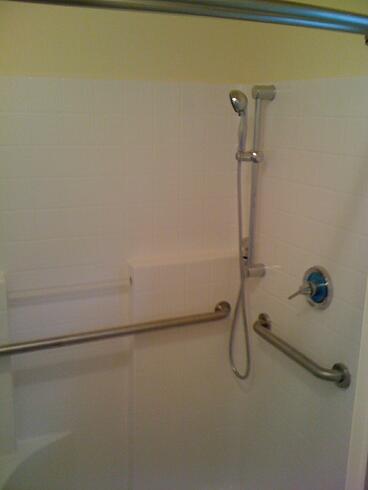

Tags:
Austin,
Texas,
how-to,
ADA compliant kitchen cabinets,
ADA accessible,
accessible routes,
aging in place home modifications,
ADA remodeling,
ADA bathroom cabinets,
accessibility home remodeling in Austin,
accessible home remodeling,
bathroom modifications for elderly,
aging in place specialist,
aging in place services,
aging in place design,,
elder construction,
certified aging in place specialist,
bathroom modifications for disabled,
ADA vanities,
bathroom accessibility remodels in Austin,
accessibility remodelers in Austin,
ADA remodeling Austin, Texas,
ADA bathroom Austin, Texas,
accessibility designs Austin Texas







































